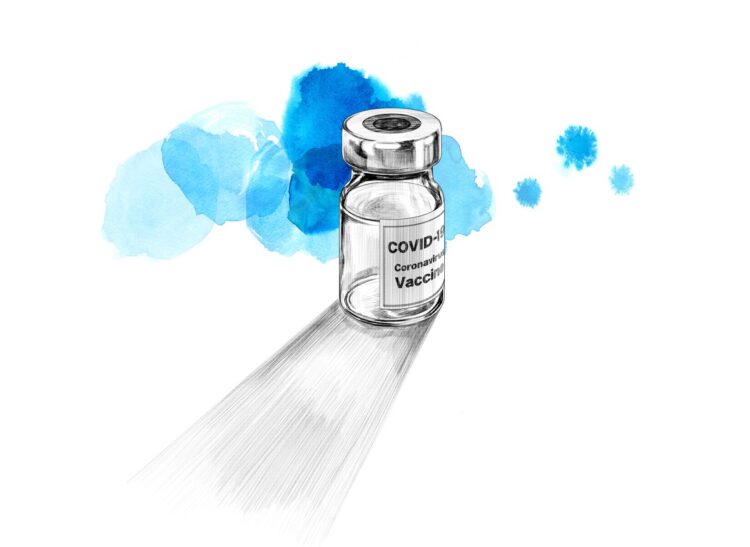April 16, 2021
By Stephanie Schorow for the Global Mass Vaccination Site Collaborative
Data collection and logistics was the focus of the virtual April 16 meeting. Dan Resnick-Ault, MD, administration and operations fellow for the Department of Emergency Medicine, University of Colorado School of Medicine, presented on the challenge of creating a mass vaccination site at Coors Field in Denver. He began his talk by noting that military data indicates that if you could create a good “throughput” or traffic flow with less queuing, you can run a site for fewer hours, decrease staffing costs, and increase the vaccination rate. Thus, his team’s goal was creating an effective traffic flow.
The vaccination site at Coors Field opened February 2021 and was soon able to administer 5,000 doses during a 6-hour window with 200 staff. Two traffic lanes were set up to feed into six queuing lanes that led to the registration tents. Bail-out or snafu spaces were set up to pull aside those cars with problems with registration so as not to block the flow. Cars successfully registered were then sent to 16 vaccination tents and finally directed to observation parking lots. A command post was set up on top of a nearby four-story parking lot. Data collected indicated that 830 cars were processed in an hour.
Resnick-Ault described some of the issues encountered. For example, lanes leading cars to the observation lots narrowed to two lanes and caused a backup so severe “we actually had to pause vaccination at one point,” said Resnick-Ault. Michael Skaggs, a first-year medical student, had a dream about a better way to do this workflow. Before medical school, Skaggs ran a whitewater rafting company in which he had to juggle through-put and timing for a fleet of rafts. Translating that operational skill to the vaccination site, he envisioned having vehicles distributed in a serpentine manner to the observation parking lots and then discharged out to the side. “This means the ingress lane to the traffic is never paused.”https://www.youtube.com/embed/P8Dz4VVphGo?feature=oembed
The Colorado team found that the first weekend, people spent about 22.48 minutes total on the site. One of the slow-down points was in registering patients. The team eliminated a separate registration step by registering people at the point of vaccine delivery. With the addition of a mobile app for registration, the team was able to reduce the median time from registration to vaccination from 4.27 to 2.18 minutes, thus decreasing overall time.
Other challenges involved frigid temperatures that made it difficult for staff to operate outside. This was solved with the use of a “mega tent” wide enough for eight lanes. Additional snafu spaces were added to ensure traffic continued to flow smoothly.
The group discussed the issue of holding people for observation in case of a severe allergic reaction. Liquid Benadryl was kept on hand and given to those who said they didn’t feel well. Resnick-Ault recalled a lesson from the Cardinals mass vaccination site in Arizona from which his team learned and incorporated into their setup. In Arizona, a row of ambulances was first stationed near the observation lots; they were later moved out of the direct line of sight, Resnick-Ault said. “When people could see a row of ambulances, they had lots of reactions. When [the ambulances] were moved behind, all their problems went away.” In Denver, people were not pressured to leave lots; no severe reactions requiring hospitalization were observed.
While the Coors site was closed due to a lack of vaccine supplies, Resnick-Ault anticipated that the lessons learned could be applied if re-opened. “We think we can do 15,000 a day without breaking a sweat,” he said.
Key Takeaways
- The use of a “bail-out” or snafu space for drivers with registration issues to pull into is crucial to keep the general traffic flowing.
- When the team began to use Epic Rover, a mobile app that allows clinicians to record documentation and conduct barcode validation at the point of care, they were able to substantially reduce the time from registration to vaccination.
- The creation and implementation of a real-time data collection tool allowed for visualization of throughput and actionable data for day-of and post-hoc clinic improvements.
- The reduction or elimination of post-vaccine observation time for a second dose might be considered, although this was not a point of universal agreement.
The Global Mass Vaccination Site Collaborative was launched as a way for stakeholders directing vaccination campaigns around the world to come together and learn from each other’s efforts. This blog series was created to record and share the learning and insights gained from this collaboration. Read blogs from our previous meetings here.



